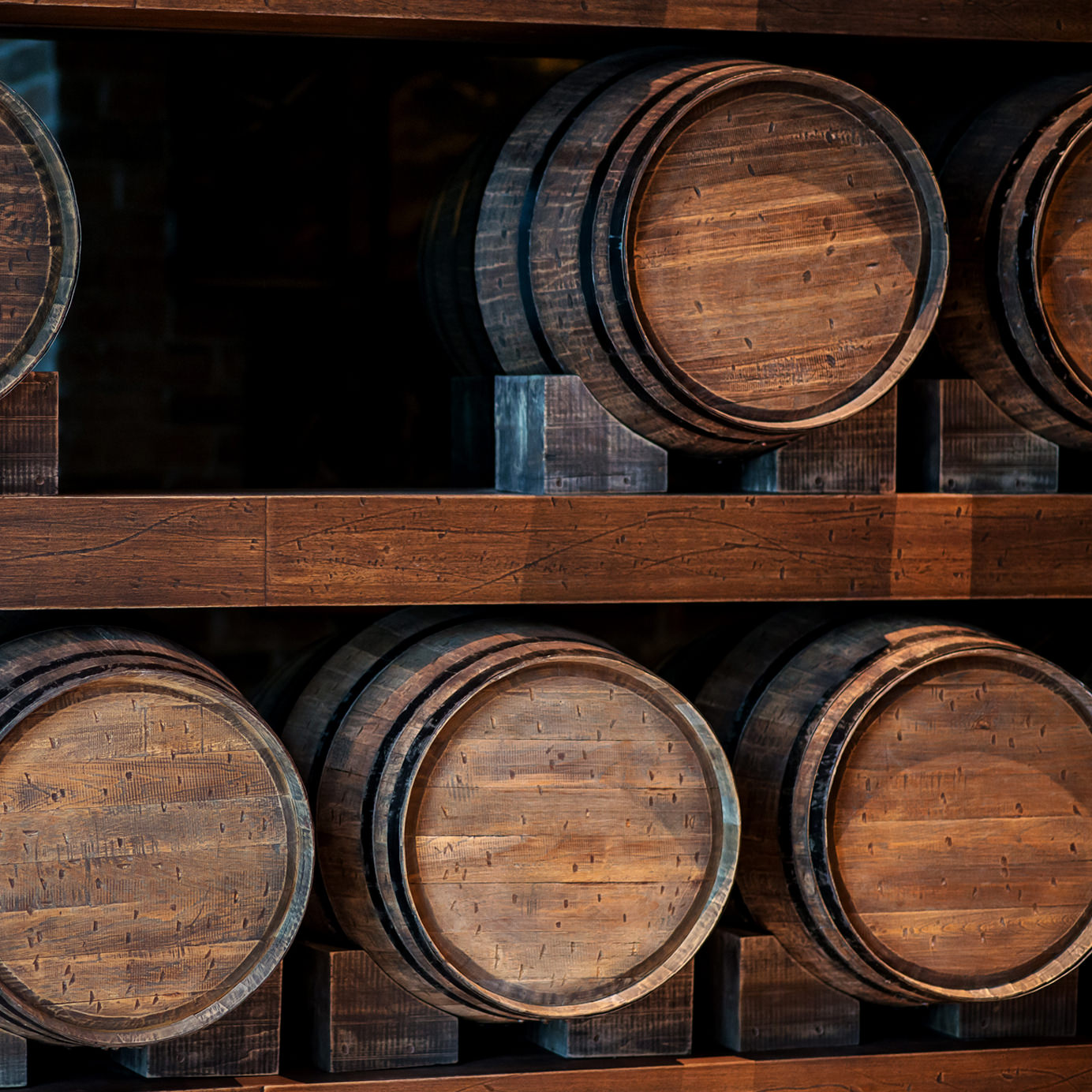While natural and minimalist winemaking may get a lot of buzz, another trend is taking over American wine shops, liquor stores, and grocery shelves. Bourbon barrel-aged wine has boomed since its introduction in 2014. Recently, California-based wineries such as Robert Mondavi, Fetzer Vineyards, and Apothic Wines have joined the trend.
For decades, distillers have aged Scotch in bourbon barrels; recently gin, beer, and even maple syrup have gotten in on the action. Wine, however, has a long history of standard oak barrel-aging. Does bourbon barrel-aging really create a new style of wine? Or is it just a marketing gimmick?
The first modern bourbon barrel-aged wine, 1000 Stories by Fetzer Vineyards, was released in the American market in 2014. It wasn’t the first time that American winemakers had used bourbon barrels in winemaking, however.
“I distinctly remember in the early ‘80s, when I was getting started as a winemaker, that getting French oak for wine was a big deal,” Bob Blue, winemaker of 1000 Stories, says. “Since there wasn’t a ton of capital, we used bourbon barrels.”
Modern bourbon barrel-aged wine is less about keeping costs low and more about boosting flavor and richness in wines like Cabernet Sauvignon, Zinfandel, red blends, and Chardonnay. “When we use bourbon barrels to finish a portion of the wine, we introduce a different, more intense set of aromas and flavors that would be less pronounced in traditional wine barrels,” Blue says.
While bourbon barrels are slightly taller and skinnier than standard oak barriques, increasing the wine-to-wood ratio, the alleged difference in flavor and richness comes from the fact that bourbon barrels are legally required to be made from new, heavily toasted American oak.
“Since bourbon barrels by law need to be 100 percent new American oak, and heavily charred, there is an amazing amount of flavor remaining in the wood,” Patrick Rue, founder and CEO of The Bruery, says. The bourbon barrels used by winemakers are therefore likely single-use vessels, more aggressively charred than traditional wine-aging barrels. Based in California, The Bruery offers a wide range of barrel-aged beers such as White Chocolate and 8 Maids-a-Milking, both aged in bourbon barrels.
Goose Island created the first bourbon barrel-aged beers in 1992. Ever since, operations like The Bruery have found great success with bourbon barrel-aged beers. After an uptick in breweries launching barrel-aged beers in the mid-to-late aughts, the category has seen steady growth since 2011.
“Barrels will give the character of whatever was previously aging in them,” Jeremy Kosmicki, brewmaster of Founders Brewing Co., says. “So with bourbon barrels, you should expect that smooth sweetness of a bourbon.”
Bourbon barrel-aging effects noted by winemakers include caramel, maple, vanilla, brown sugar, sweet spice flavors, and, allegedly, a subtle bourbon character. They also note an increase in richness and, at times, alcohol.
Most of these flavors can also be created by standard oak barrel-aging — an area in which wine, unlike beer, has a long history.
The heavy charring of a bourbon barrel might imbue these flavors more strongly; winemakers note that they actually have to take steps to prevent bourbon barrels from overwhelming the character of the wine entirely. Such precautions include limiting barrel-aging time to only a month or two, aging only a portion of the wine in bourbon barrels, or finding very old barrels. “This way, the barrels don’t take away from the grape or its origin and instead serve as merely a way to store the wine as it ages while imparting intriguing nuances to our wine,” Deb Juergenson, winemaker for Apothic Wines, says.
In the glass, it’s hard to distinguish any real difference between bourbon barrel-aging and standard oak barrel-aging. The 1000 Stories Bourbon Barrel-Aged Zinfandel is a well-balanced, characterful Zinfandel, but a wine drinker would be hard-pressed to discern specific bourbon barrel characteristics. The Apothic “Inferno” has a distinct vanilla flavor that could be found in most types of new oak barrels, along with a very high alcohol content at 15.9 percent. While the bourbon-like alcohol burn may distinguish it from a standard barrel-aged wine, it isn’t necessarily a positive attribute. The Stave & Steel Bourbon Barrel-Aged Cabernet Sauvignon is big and balanced, but again, the caramel and sweet coconut influence could easily come from a standard, new American oak barrel.
Bourbon barrel-aging doesn’t make a noticeable difference in the flavor of a wine, and it certainly doesn’t bring down the price. In fact, several of these bourbon barrel-aged wines cost $3 to $5 more than their standard barrel-aged counterparts, like the Apothic “Inferno” and the Robert Mondavi Private Selection Bourbon Barrel-Aged Cabernet Sauvignon.
Instead, bourbon barrel-aged wine has everything to do with marketing. Bourbon, whiskey, and rye have undergone a major renaissance in recent years. Bourbon from Kentucky alone has seen a 315 percent increase in production since 1999. Winemakers see potential profit in this market.
“Riding on the coattails of bourbon’s success, we saw a great opportunity to combine our traditional California winemaking with the unique aging process that comes from used bourbon barrels to offer consumers a bolder, richer side of Robert Mondavi Private Selection,” says Jason Dodge, senior director of winemaking for Robert Mondavi Private Selection.
Ultimately, bourbon barrel-aging wine is more about perception than taste or technique. The term gives consumers an idea of what the wine will taste like — warm, lightly sweet, and “brown,” like bourbon — and then delivers on that promise. These are bold, rich wines. And as much as wine professionals might prefer balanced acidity or even funk, American palates reportedly crave sweet, bigger-is-better flavor profiles. As much as it lacks purpose, or discernible difference, we can’t blame winemakers for wanting to associate their bottles with a trending concept. Bourbon barrel-aging may not make a huge difference from a winemaking perspective, but it creates a wildly marketable category — at least for now.
